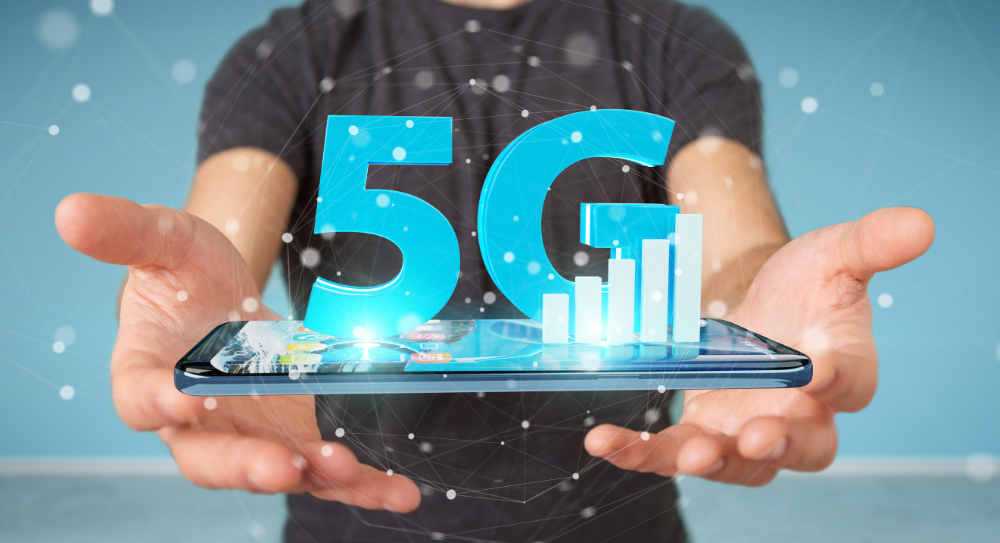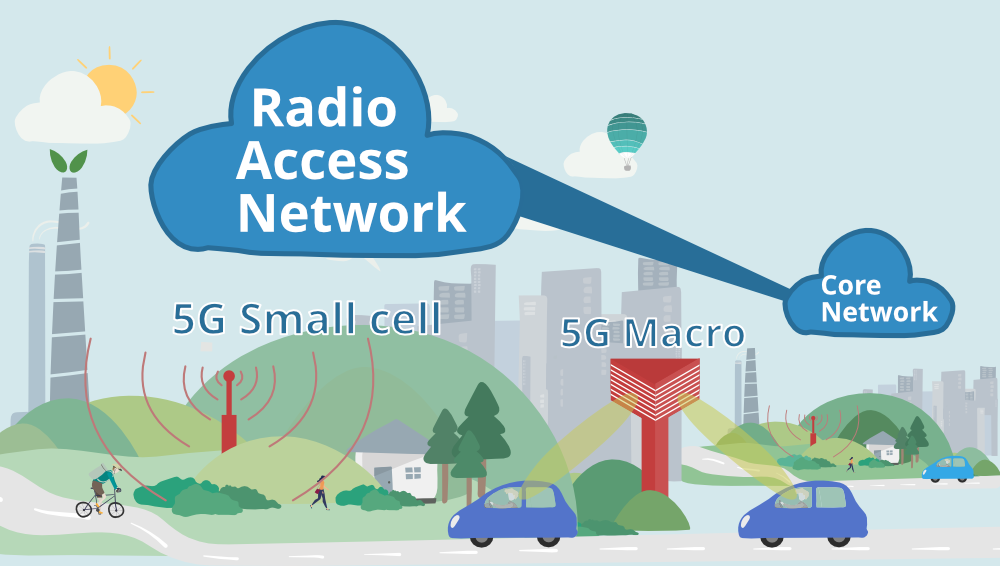What is 5G Wireless Technology and How it Works?
Last Updated :
24 Sep, 2019
According to Robert J. Topol, Intel’s General Manager for 5G Business and Technology,
5G will be the post-smartphone era. But phones are the first place to launch because they’re such an anchor in our lives from a connectivity standpoint.
And indeed the applications of 5G merely begin at smartphones and then branch out to include many new devices and services in multiple industries from retail to education to entertainment! So let’s start at the beginning with an Introduction to 5G Wireless Technology as we try to understand this incredible new technology in detail.

5G Wireless Technology is the 5th generation of mobile networks and an evolution from the current 4G LTE networks. It is specially designed to fulfill the demands of current technological trends, which includes a large growth in data and almost global connectivity along with the increasing interest in the Internet of Things. In its initial stages, 5G Technology will work in conjugation with the existing 4G Technology and then move on as a fully independent entity in subsequent releases.
Now let’s try to answer some of the major questions associated with 5G Wireless Technology so that we can understand it better.
What is 5G Wireless Technology?
5G Wireless Technology is now the latest cellular technology that will greatly increase the speed of wireless networks among other things(And who doesn’t want that?!!). So the data speed for wireless broadband connections using 5G would be at a maximum of around 20 Gbps. Contrasting that with the peak speed of 4G which is 60 Mbps, that’s a lot! Moreover, 5G will also provide more bandwidth and advanced antenna technology which will result in much more data transmitted over wireless systems.
And that’s just a small sampling of the capabilities of 5G technology! It will also provide various network management features such as Network Slicing using which mobile operators will be able to create multiple virtual networks using a single physical 5G network. So in this futuristic scenario, if you are inside a self-driving car, then a virtual network with an extremely fast, low-latency connections would be required because obviously the car needs to navigate in real-time. On the other hand, if you are using any smart appliance in your home, then a virtual network with lower power and a slower connection would be fine because it’s not a life or death situation!!!
How does 5G Wireless Technology Work?
There are basically 2 main components in the 5G Wireless Technology systems i.e. the Radio Access Network and the Core Network. Let’s see these in detail.

1. Radio Access Network: The Radio Access Network mainly includes 5G Small Cells and Macro Cells that form the crux of 5G Wireless Technology as well as the systems that connect the mobile devices to the Core Network. The 5G Small Cells are located in big clusters because the millimeter wave spectrum (that 5G uses for insanely high speeds!) can only travel over short distances. These Small Cells complement the Macro Cells that are used to provide more wide-area coverage.
Macro Cells use MIMO (Multiple Inputs, Multiple Outputs) antennas which have multiple connections to send and receive large amounts of data simultaneously. This means that more users can connect to the network simultaneously.
2. Core Network: The Core Network manages all the data and internet connections for the 5G Wireless Technology. And a big advantage of the 5G Core Network is that it can integrate with the internet much more efficiently and it also provides additional services like cloud-based services, distributed servers that improve response times, etc. Another advanced feature of the Core Network is network slicing (Which we talked about earlier!!!).
What are the Benefits of 5G Wireless Technology?
5G Wireless Technology will not only enhance current mobile broadband services, but it will also expand the world of mobile networks to include many new devices and services in multiple industries from retail to education to entertainment with much higher performances and lower costs. It could even be said that 5G Technology as much as the emergence of automobiles or electricity ever did!!!
Some of the benefits of 5G in various domains are given here:
- 5G will make our smartphones much smarter with faster and more uniform data rates, lower latency and cost-per-bit and this, in turn, will lead to the common acceptance of new immersive technologies like Virtual Reality or Augmented Reality.
- 5G will have the convenience of ultra-reliable, low latency links that will empower industries to invest in more projects which require remote control of critical infrastructure in various fields like medicine, aviation, etc.
- 5G will lead to an Internet of Things revolution as it has the ability to scale up or down in features like data rates, power, and mobility which is perfect for an application like connecting multiple embedded sensors in almost all devices!
What are the Parameters for 5G Wireless Technology?
Details about the performance of 5G Wireless Technology according to various parameters are given here:
| Peak data rate |
At least 20Gbps downlink and 10Gbps uplink per mobile base station. |
| Real-world data rate |
Download speed of 100Mbps and upload speed of 50Mbps. |
| Spectral efficiency |
30bits/Hz downlink and 15 bits/Hz uplink. This assumes 8×4 MIMO |
| Latency |
Maximum latency of just 4ms (compared to 20ms for LTE) |
| Connection density |
At least 1 million connected devices per square kilometre (to enable IoT support) |
When will the 5G Wireless Technology be Launched?
South Korea and the U.S. became the first countries to commercially launch the 5G Wireless Technology in April 2019. China is also moving towards launching 5G by providing commercial 5G licenses to its major carriers. Japan plans to launch 5G in time for the 2020 Tokyo summer Olympics.
The Central government in India has also set a target of 2020 for the commercial launch of 5G Wireless Technology, which is mostly in time with the other countries. The government already launched a three-year program in March 2018 to promote research in 5G. Also, Ericsson has created a 5G test base at IIT Delhi for developing applications that are tailor-made for the Indian scenario.
What will be the economic impact of 5G Wireless Technology?
In a landmark study conducted on the 5G Economy by Qualcomm, it emerged that the full economic effect of 5G Wireless Technology would appear around 2035 in a broad range of industries which would produce up to $12.3 trillion worth of goods and services that were directly enabled by 5G. It also emerged that the 5G Wireless Technology could potentially generate up to $3.5 trillion in revenue in 2035 and also directly support up to 22 million jobs. Also surprising is the fact that over time, the total contribution of 5G to the Global GDP growth could be as much as the contribution of India (Which is the seventh-largest economy in the world!!!)
Like Article
Suggest improvement
Share your thoughts in the comments
Please Login to comment...